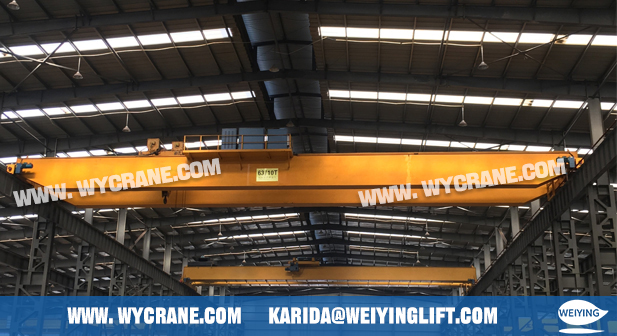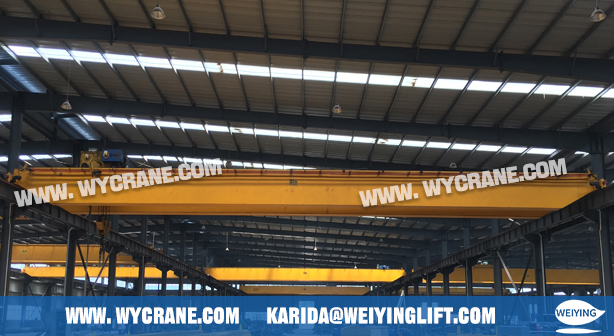Cranes play a vital role in industrial operations — lifting, transporting, and positioning heavy loads with precision and safety. But as time passes, even the most reliable cranes begin to age. Technology evolves, safety standards tighten, and production needs change.
When this happens, one important question arises:Should you modernize your existing crane or replace it with a new one?
Both modernization and replacement can improve performance and safety. The right choice depends on your crane’s condition, operating requirements, and long-term goals.
 |
 |
Crane modernization means upgrading your existing crane with new technologies, components, and control systems to improve performance and extend service life.
Rather than replacing the entire crane, modernization focuses on key systems such as:
Electrical and control systems
Drives and motors
Safety devices and limiters
Operator cabins or control panels
Automation and remote monitoring
This approach allows you to enjoy the performance of a new crane — with less cost and downtime.
Modernization is ideal when your crane’s main structure is still strong, but other components are outdated. Consider modernization if:
You want to improve safety, performance, or compliance without full replacement.
The crane requires frequent minor repairs, causing downtime or higher maintenance costs.
Lifting requirements have changed, but the structure remains sound.
You wish to add smart features such as sway control, automatic positioning, or remote monitoring.
Upgrading controls, safety systems, or electrical parts meets your operational needs.
In most cases, modernization delivers 70–80% of the performance of a new crane at about half the cost.
Sometimes modernization isn’t enough. Replacement may be the best option if your crane’s structure or major components are no longer safe or cost-effective. Consider replacing when:
Main structural parts (e.g., bridge girders or end trucks) show serious damage or fatigue.
The combined cost of modernization exceeds the price of a new crane.
The crane is 20–30 years old and has extensive wear or outdated design.
If your crane no longer meets performance or safety standards, full replacement ensures reliability and compliance for the future.
Making the right decision requires balancing cost, downtime, and operational efficiency. Here’s how to evaluate your options:
Inspect the main load-bearing components — girders, end trucks, and runways.
If the structure is in good shape, modernization may be sufficient.
If cracks or deformation are present, replacement is the safer choice.
Ask what you want to achieve:
Fixing specific problems (e.g., slow control response, frequent faults)? → Choose modernization.
Completely upgrading for new demands or technology integration? → Choose replacement.
Compare total costs — including modernization, replacement, and long-term maintenance.
Modernization generally has lower upfront costs and can extend service life by 10–20 years.
If modernization costs approach 70% of a new crane, replacement may be more economical.
Modernization projects usually need less downtime and can be done in stages, minimizing production loss.
Replacement typically requires longer installation and commissioning.
Upgrading your crane brings many operational and financial benefits:
Enhanced Safety – New limit switches, overload protection, and emergency systems meet modern standards.
Improved Efficiency – Modern controls and drives enable smoother operation and energy savings.
Extended Service Life – Continue reliable operation for another decade or more.
Lower Maintenance Costs – Newer parts and systems mean fewer breakdowns and repairs.
Smart Technology Integration – Add automation, load monitoring, and remote diagnostics for intelligent lifting.
With modernization, your crane performs like new — at a fraction of the replacement cost.
Modernization can involve one or more of the following improvements:
Electrical & Control Systems – New panels, PLCs, and frequency inverters.
Motors & Drives – Energy-efficient components that improve lifting speed and reliability.
Safety Systems – Overload limiters, anti-collision devices, and emergency stop functions.
Automation – Add sway control, automatic positioning, and real-time load data.
Operator Cabin Upgrades – More ergonomic, user-friendly controls for operators.
Each modernization plan can be tailored to your specific crane model and production needs.
Whether you choose modernization or replacement, your goal remains the same — safe, efficient, and reliable crane operation.
Crane modernization offers a smart, affordable way to upgrade performance, minimize downtime, and extend equipment life.Crane replacement guarantees a brand-new system when the structure has reached its limits.
With 34 years of manufacturing experience and 12 years of export expertise, we have built a dual advantage of professional qualifications and a global presence. Our business covers more than 100 countries and regions across Asia, Europe, the Americas, Africa, and Oceania. We are certified under the ISO management system and hold CE product certifications. Our main product lines include six major series—electric hoists, electric winches, gantry cranes, bridge cranes, marine cranes, and portal cranes—comprising nearly 100 different models.
If you want to learn more, please contact us.
E-mail address: karida@weiyinglift.com
Website: www.wycrane.com